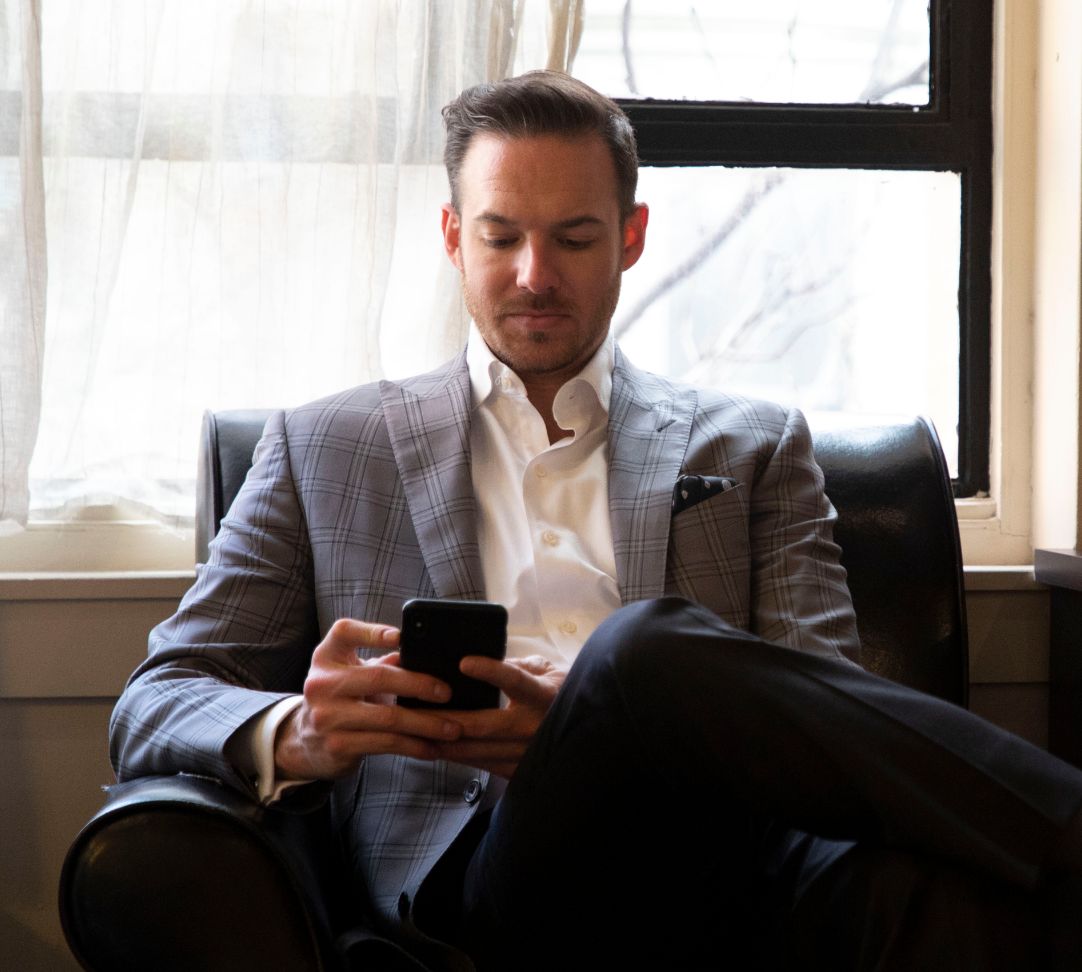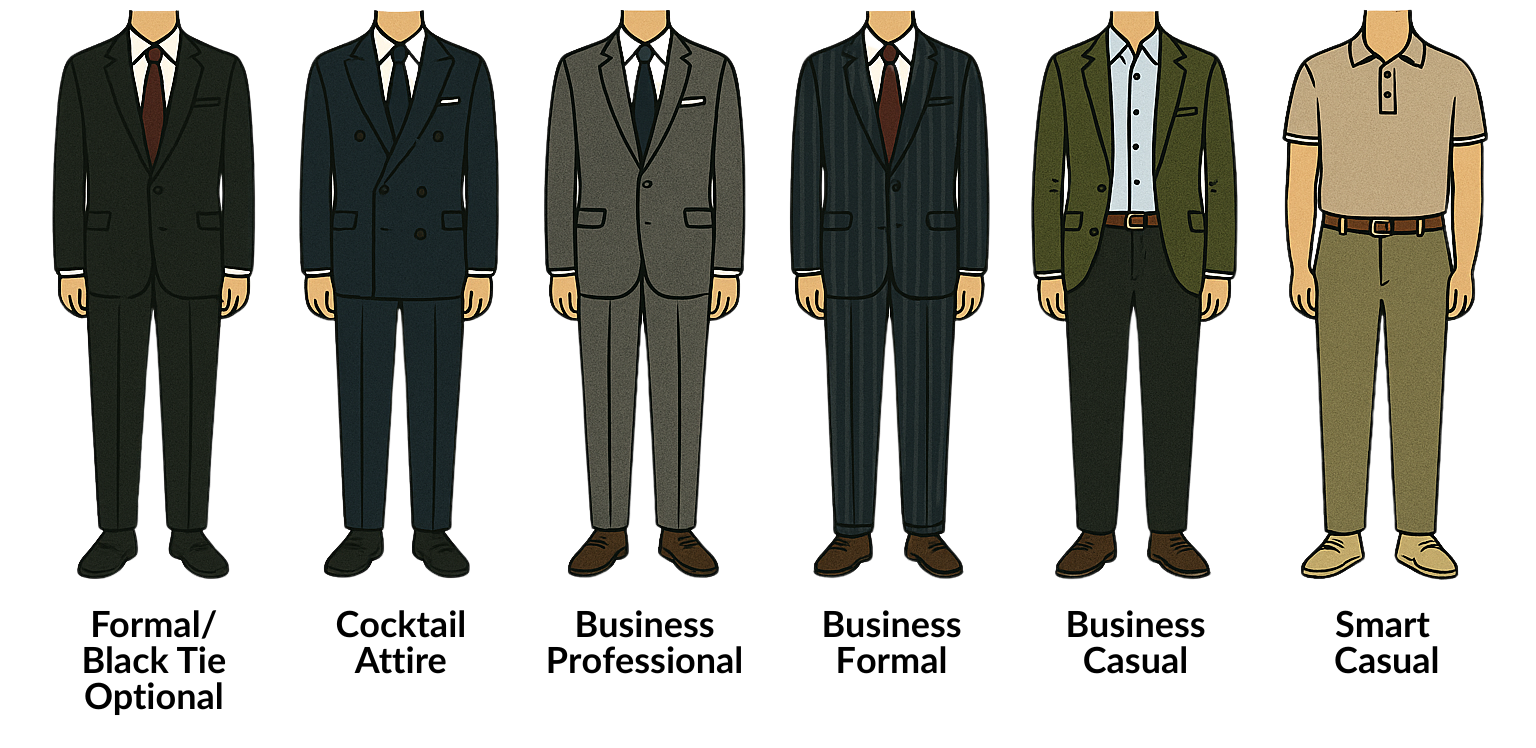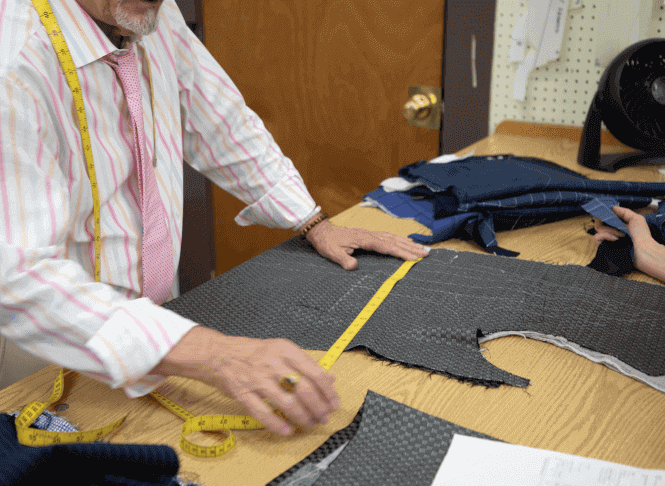Color can be downright mystifying. This is especially true for men, who more often suffer from colorblindness than women. To make things even more challenging, building a wardrobe requires knowledge of not just color, but also how “contrast” works. This blog post gives a brief explanation as to what contrast is in menswear and how to use it to your advantage.
As Philadelphia & New York’s top image consultants and bespoke tailors for men, we talk about color – and color contrast – quite often.
How Contrast Functions In Menswear
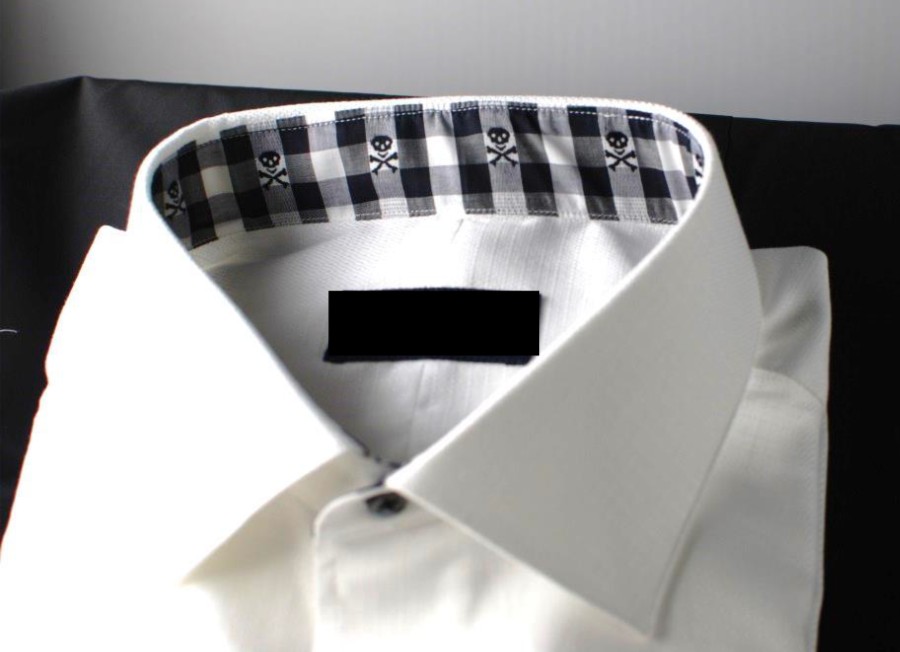
The first question to answer, obviously, is “what is contrast?” We find that the easiest way to explain it is to frame it as the relative lightness or darkness one a color versus other colors. If you need a primer on how color itself works, click the link for our guide to color.
It’s easiest to understand when taken to extremes. A standard tuxedo offers as “high contrast” a look as you can get – black jacket and trousers at one end of the spectrum, and a white shirt at the other. At the other extreme, we have “Who Wants To Be A Millionaire?”-era Regis Philbin, who wore suits, shirts, and ties in perfectly matching colors. This is as low contrast as is possible – zero contrast, in fact.
Contrast applies to how clothing interacts with itself, but it doesn’t end there. We also use it to talk about our visages, the colors that occur naturally in our face, eyes, and hair.
How To Determine Your Personal Palette
Figuring out how “contrast-y” you are is actually one of the easier color concepts to see immediately. Ask yourself these questions:
- Do I have fair skin, dark skin, or something in between?
- Do I have fair hair, dark hair, or something in between? If you have no hair, it simply assigns more contrast value to the other parts of your face.
- Do I have light eyes, dark eyes, or something in between?
Once you have the answers to these questions, you can determine whether you’re low, medium, or high contrast. From there, you can use contrast in your clothing to enliven the look of your face to varying extents.
Remember that, like all things style, contrast is more of a place on a continuum than a hard-and-fast designation. A face with any contrast level can wear outfits of any contrast level and still potentially look good. We use contrast harmony to determine what makes us look best.
High Contrast
 Let’s say you have black hair and fair skin – lots of East Asian men like the gentleman pictured would find themselves in this category, but any guy with light skin and dark hair (or vice-versa) will too. The vast difference from light to dark means you’re a high contrast face. As such, a high level of contrast in the clothes underneath the face (typically a shirt, jacket, and tie) will complement this face quite well. Low contrast clothing, on the other hand, will soften your look.
Let’s say you have black hair and fair skin – lots of East Asian men like the gentleman pictured would find themselves in this category, but any guy with light skin and dark hair (or vice-versa) will too. The vast difference from light to dark means you’re a high contrast face. As such, a high level of contrast in the clothes underneath the face (typically a shirt, jacket, and tie) will complement this face quite well. Low contrast clothing, on the other hand, will soften your look.
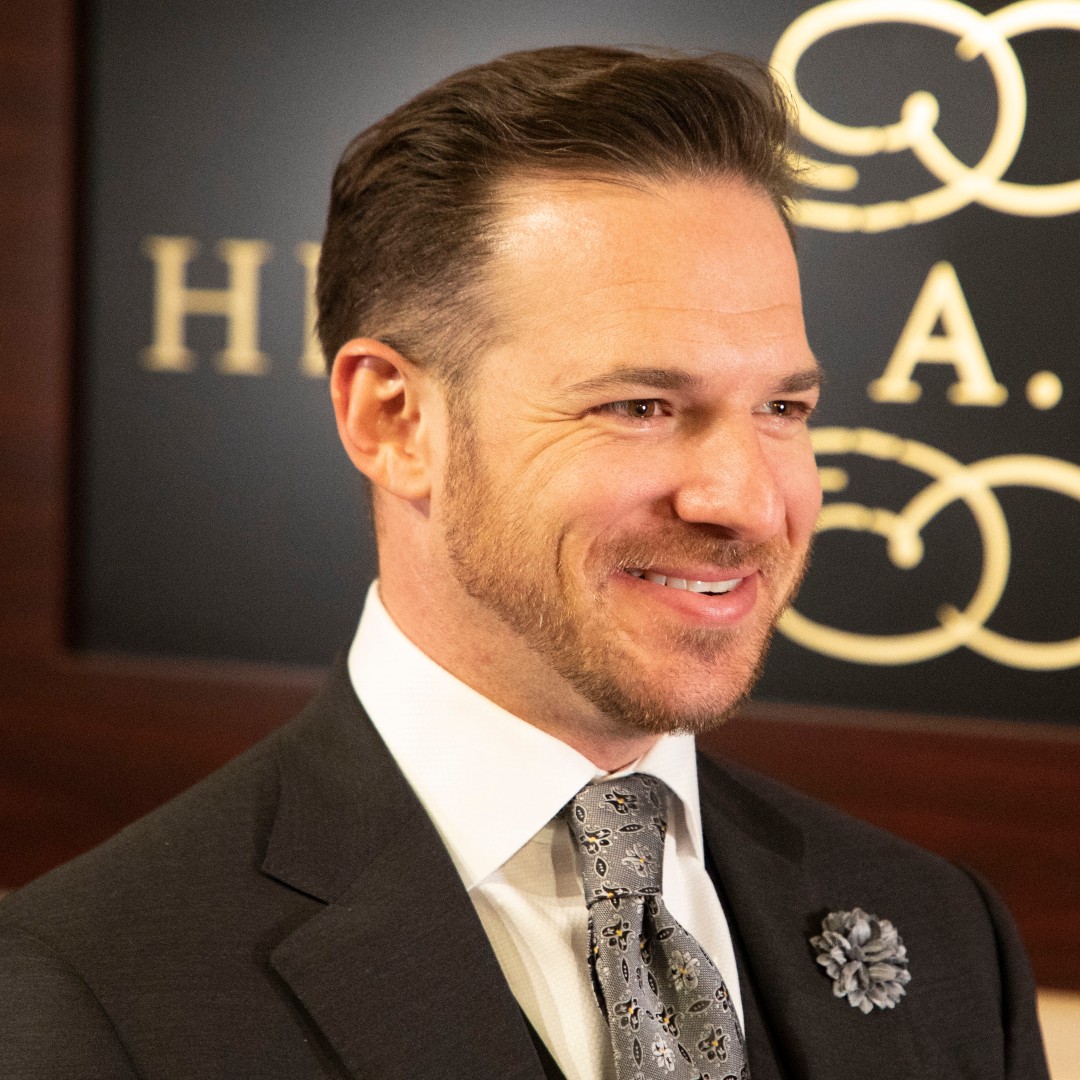
Generally speaking, high contrast looks tend to be more formal. We can go right back to the example of a tuxedo for evidence, but even the standard business suit inherently involves a lot of contrasting color right below the face.
Medium Contrast
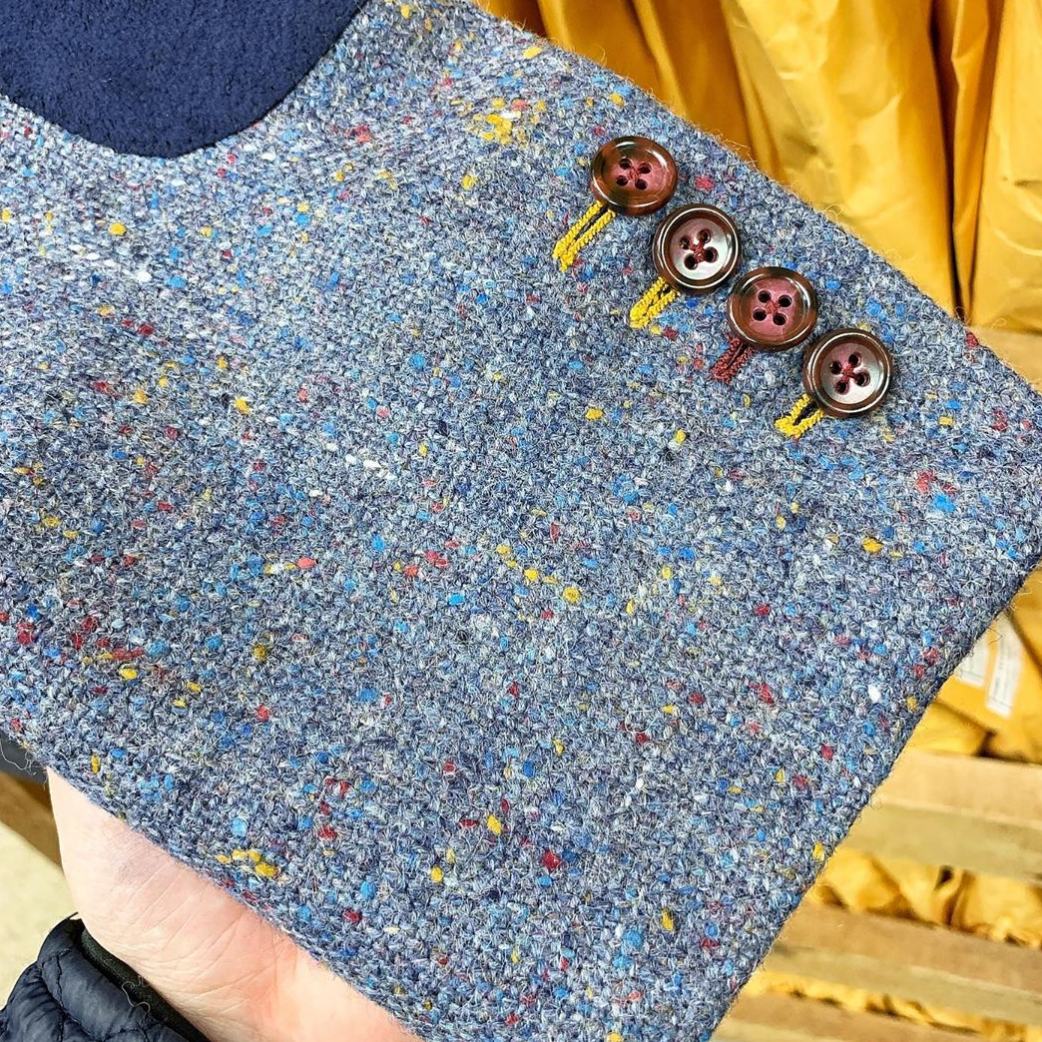
Lots of men have “medium contrast” faces, which makes sense given the definition of the word “medium.” Hair colors in this category range from dark blonde to tobacco brown and red, eye colors are often brown or hazel, and skin tones range from fair to dark. Brian, our CEO, has a classic medium contrast face.
Medium contrast men, rejoice – your life is easiest as it relates to the contrast in your wardrobe. Your countenance looks great with either high or low contrast outfits, so you have the greatest leeway of anyone in these three categories.
Low Contrast
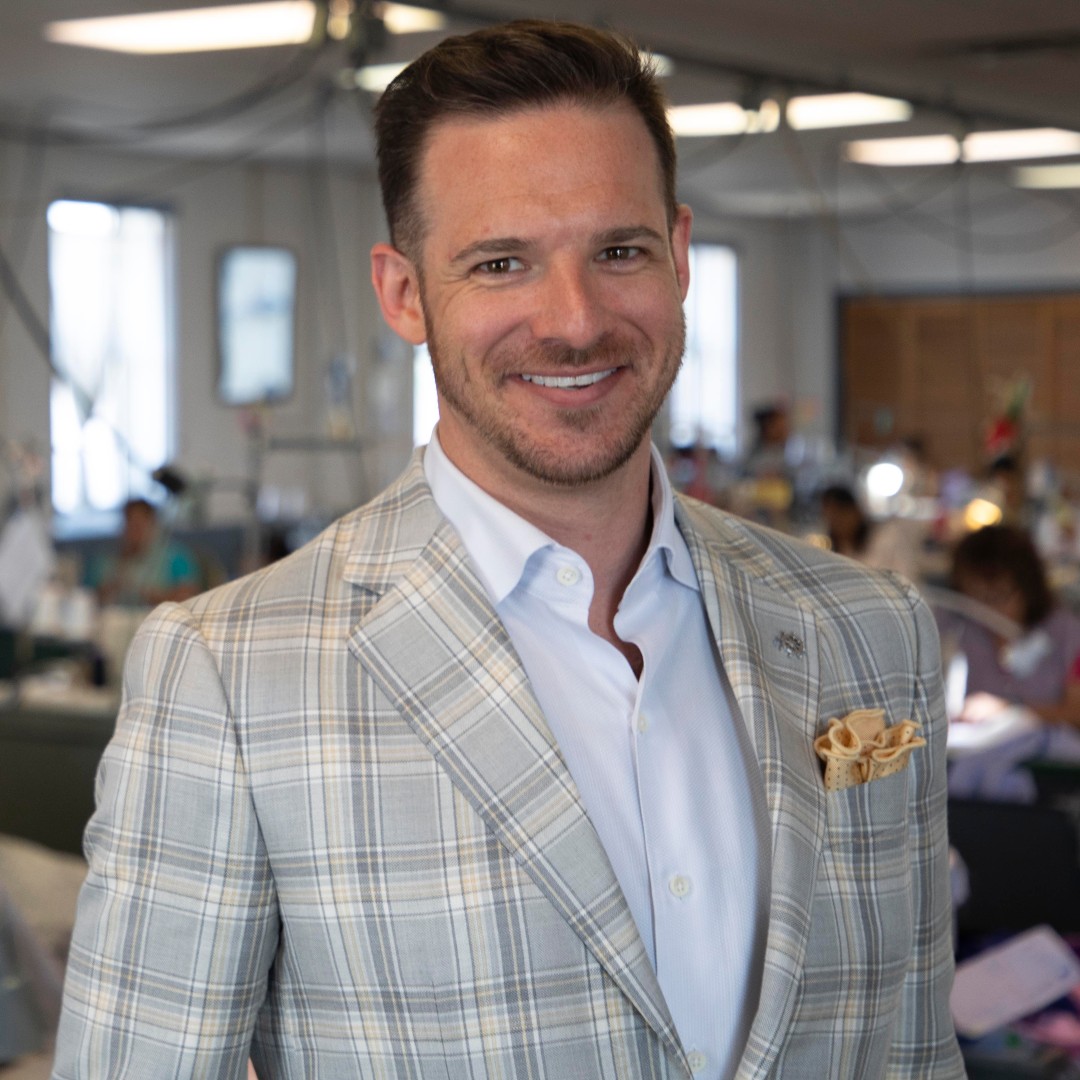
Low contrast men have relatively little difference in color darkness amongst their hair, eyes, and face. Blondes with blue, green, or very light brown eyes and fair skin fall into this category. On the other end of the spectrum, dark-skinned Black men with commensurately dark hair have low contrast faces.
High contrast looks can overwhelm a low contrast face easily, so it’s generally best to opt for lower contrast outfits. In the pre-COVID professional wardrobe, this would mean dark suits, but business-appropriate substitutes for white shirts. Examples would be light blue, lavender, light grey, and ecru. In our more casually-oriented world, this simply means opting for a monochromatic-leaning (not totally monochromatic) look with touches of contrast.
Conclusion
As it relates to how we look, men are traditionally disadvantaged compared to women. This is not to say that one sex “looks” better than the other, but rather that society places high value on girls’ appearances from a very young age. We simply don’t do the same for boys. It’s our sincere hope that this post on how contrast works in menswear gives you more confidence when you get dressed in the morning.
Ready to take the plunge and start managing your image more closely? We’re here to help. Give us a call at 215-310-0219 or email info@henrydavidsen.com to get started. Until then, enjoy these other articles:
